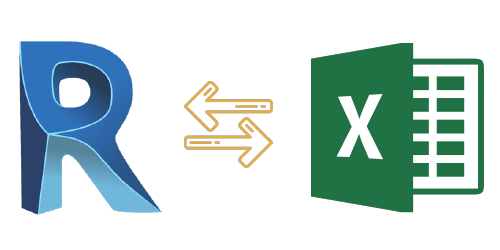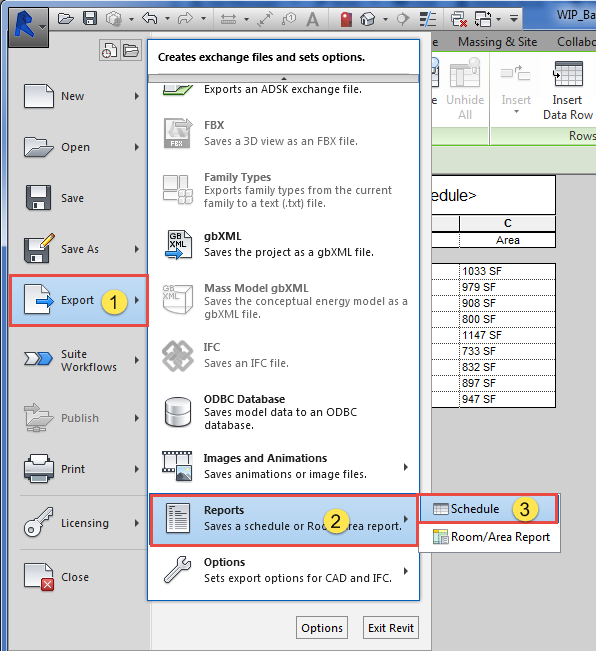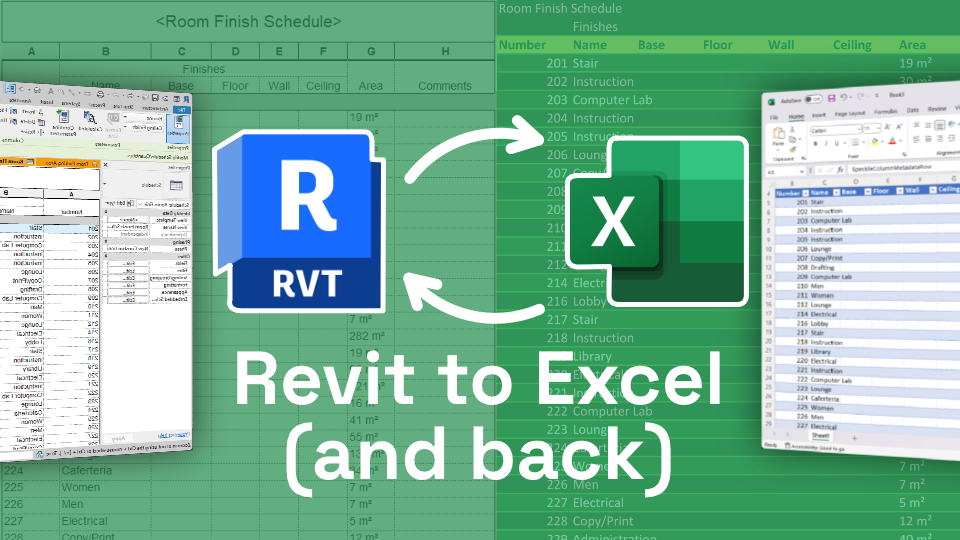Excel-to-Revit: A Game-Changing Operations for Architectural Design - Unveiling the Tricks
Introducing excel-to-revit, the game-changing workflow that will revolutionize your layout procedure. With excel-to-revit combination, you can improve your architectural layout, unlock effectiveness, and take full advantage of collaboration within your team. Obtain prepared to take your architectural style to the next level with excel-to-revit!
The Power of Excel-to-Revit Assimilation

Envision the comfort of being able to upgrade and modify job data in Excel, and instantly see those adjustments shown in your Revit model. Say goodbye to hands-on data access or tiresome updates. With Excel-to-Revit integration, you can conserve time and decrease errors by leveraging the power of Excel's solutions and functions to instantly produce exact information in Revit.
Not only does this combination improve performance, but it additionally enhances cooperation among employee. You can conveniently share Excel files with coworkers, who can after that import the data right into their Revit versions. This promotes a smooth exchange of information and makes certain that everybody is dealing with the most updated information.

Streamlining Building Design With Excel-To-Revit
Enhancing architectural design is simplified with the use of Excel-to-Revit (revit tool). With this powerful combination, you can optimize your process and conserve important time throughout the layout process. By leveraging the capabilities of Excel and Revit, you can perfectly move data in between the 2 platforms, removing the need for hands-on information entry and lowering the risk of mistakes
Excel-to-Revit permits you to import and export data effortlessly, allowing you to easily update and customize your building designs. You can produce routines, compute quantities, and produce reports in Excel, and after that move that data directly right into your Revit version. This integration guarantees that your style details is constantly up-to-date and synchronized, eliminating the requirement for hands-on updates and lowering the chances of disparities.
By utilizing Excel-to-Revit, you can additionally benefit from the effective computational capabilities of Excel. You can perform complex computations, analyze data, and automate repeated jobs, all within Excel. With simply a couple of clicks, you can import the results back right into Revit, enabling you to make educated design choices and optimize your building layouts.
Opening Performance: Discovering the Excel-to-Revit Operations
Optimize your efficiency by effortlessly integrating Excel and Revit for a much more efficient workflow. With the Excel-to-Revit workflow, you can open an entire brand-new degree of performance in your architectural design procedure. By using the power of Excel's data monitoring capacities and integrating it with the flexibility and precision of Revit, you can streamline your layout procedure and save beneficial time.
Among the essential advantages of this assimilation is the capability to import and export information in between Excel and Revit. This indicates that you can easily move task info, such as room timetables or product quantities, from one software to the various other, eliminating the demand for hands-on data access and minimizing the chances of mistakes. You can likewise create personalized formulas and estimations in Excel to automate repeated jobs and do complex estimations, which can then be flawlessly integrated right into your Revit designs.
Furthermore, the Excel-to-Revit operations permits far better coordination and cooperation in between employee. With Excel serving as a main data center, multiple staff member can work on various facets of the job all at once, sharing and upgrading information in real-time. This not just improves check my site communication yet also guarantees that every web link person is dealing with the most current information, eliminating the threat of variances.
Maximizing Collaboration: Excel-to-Revit for Architectural Teams
By flawlessly incorporating Excel and Revit, building groups can considerably enhance collaboration and attain much more efficient style outcomes. When utilizing this effective operations, you can easily move data in between Excel spreadsheets and Revit versions, improving the layout process and enhancing interaction amongst team members.
Furthermore, by leveraging Excel's effective computation capabilities, you can execute intricate computations and analysis on your layout data, driving and providing useful insights informed decision-making. This assimilation likewise allows you to export data from Revit to Excel, enabling you to produce extensive records, charts, and charts for presentations and evaluation. This collaborative operations promotes reliable communication and coordination amongst staff member, as Excel acts as a main hub for information management and sharing.
General, by welcoming the Excel-to-Revit process, building teams can attain higher degrees of cooperation, effectiveness, and precision in their design procedure. revit plugins. This assimilation empowers teams to function together effortlessly, ensuring that everybody gets on the same page and adding to the success of the project
Revealing the Keys of Excel-to-Revit Integration

Among the keys of Excel-to-Revit integration is the ability to utilize the power of solutions and calculations in Excel to drive parameters and produce facility geometries in Revit. You can discover this connect Excel spreadsheets to Revit households, enabling you to input information straight right into the spreadsheet and have it immediately upgrade in the Revit design. This simplifies the layout process and guarantees accuracy and consistency throughout the job.
An additional key is the capacity to develop custom schedules and reports in Excel, using data drawn out from Revit. This enables you to envision and assess task details in a means that is not feasible within Revit alone. You can conveniently create amount liftoffs, price quotes, and task timelines, giving valuable understandings for decision-making and project management.
Furthermore, Excel-to-Revit integration enables efficient partnership amongst group members. Multiple customers can deal with the exact same Excel spreadsheet concurrently, making it much easier to collaborate and track modifications. You can also use Excel's commenting attribute to give comments or interact design revisions.
Verdict
So there you have it, the secrets of excel-to-revit combination have actually been introduced. This game-changing workflow has the power to streamline architectural layout, unlock effectiveness, and optimize partnership for architectural teams. By incorporating the power of Excel and Revit, engineers can now function extra effectively, save time, and generate much better designs. Why wait? Start including excel-to-revit combination into your building style process today and transform the method you work.
With just a few clicks, you can import the results back right into Revit, permitting you to make educated style decisions and maximize your architectural layouts.
By making use of the power of Excel's data management capacities and incorporating it with the versatility and precision of Revit, you can simplify your layout process and save beneficial time.
By effortlessly integrating Excel and Revit, building groups can considerably enhance collaboration and attain a lot more effective layout results. When using this effective process, you can easily move data in between Excel spreadsheets and Revit versions, improving the style process and improving interaction amongst group members.Moreover, by leveraging Excel's effective calculation capabilities, you can carry out complicated estimations and evaluation on your layout information, providing important insights and driving educated decision-making.